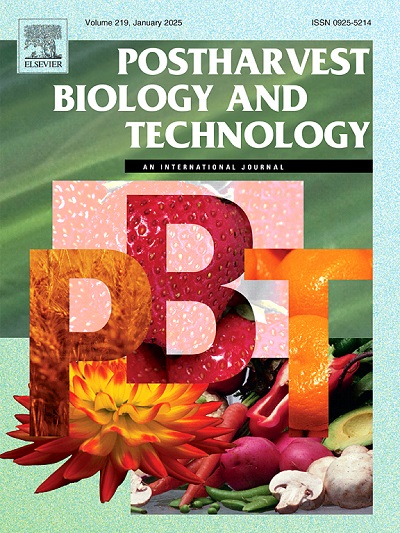Biocontrol potential of Streptomyces albidoflavus SC-3 on kiwifruit soft rot caused by Botryosphaeria dothidea
IF 6.4
1区 农林科学
Q1 AGRONOMY
引用次数: 0
Abstract
Kiwifruit soft rot is a disease caused by fungal pathogens such as Botryosphaeria dothidea, which considerably restricts the development of kiwifruit industry. To provide novel management strategies against kiwifruit soft rot disease, potential biocontrol actinomycete strains were isolated from kiwifruit rhizosphere soil. A total of 21 actinomycete strains were obtained and strain SC-3 exhibited the highest biocontrol activity against B. dothidea. Based on the morphological, biochemical and molecular characteristics strain SC-3 was identified as Streptomyces albidoflavus. The SC-3 and its aseptic filtrate (AF) exhibited excellent antifungal activities against 11 tested pathogenic fungi. AF displayed antifungal effects through suppressing mycelial growth, spore germination, and the pathogenicity of B. dothidea. Electron microscopy analysis revealed that AF could cause significant alterations on ultrastructure of B. dothidea. Moreover, AF severely damaged cell membrane integrity, resulting in the leakage of cellular components in B. dothidea. Metabolomic analyses of SC-3 AF revealed the presence of several important antifungal compounds in the AF such as antimycin, and candicidin. Correspondingly, the whole genome analyses of SC-3 identified gene clusters responsible for the biosynthesis of these compounds. Overall, SC-3 is a potential biological control agent against B. dothidea and other fungal phytopathogens.
求助全文
约1分钟内获得全文
求助全文
来源期刊

Postharvest Biology and Technology
农林科学-农艺学
CiteScore
12.00
自引率
11.40%
发文量
309
审稿时长
38 days
期刊介绍:
The journal is devoted exclusively to the publication of original papers, review articles and frontiers articles on biological and technological postharvest research. This includes the areas of postharvest storage, treatments and underpinning mechanisms, quality evaluation, packaging, handling and distribution of fresh horticultural crops including fruit, vegetables, flowers and nuts, but excluding grains, seeds and forages.
Papers reporting novel insights from fundamental and interdisciplinary research will be particularly encouraged. These disciplines include systems biology, bioinformatics, entomology, plant physiology, plant pathology, (bio)chemistry, engineering, modelling, and technologies for nondestructive testing.
Manuscripts on fresh food crops that will be further processed after postharvest storage, or on food processes beyond refrigeration, packaging and minimal processing will not be considered.
 求助内容:
求助内容: 应助结果提醒方式:
应助结果提醒方式:


